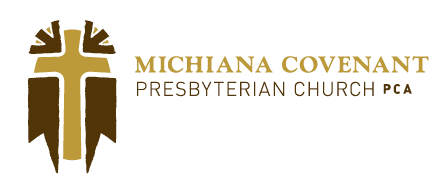The Cross of Christ and the Kingdom of Christ are at the heart of the Christian faith and life.
Jesus, like John the Baptist, came proclaiming, “Repent, for the Kingdom of heaven is at hand.” (Matthew 4:17) Likewise, Paul said to the Corinthians, “I decided to know nothing among you except Jesus Christ and him crucified.” (1 Corinthians 2:2)
“The Cross and Kingdom of Jesus Christ” was one of the first titles written by Robert Jefferson Breckinridge (1800-1871). It consisted of two sermons, the first, “The Cross of Christ,” was his sermon for licensure in the Presbytery of West Lexington in April of 1832. The second, “The Kingdom of Christ,” was his sermon for ordination in the Presbytery of Baltimore in November of 1832.
I have chosen this as the title for my blog because I think Breckinridge was right: the Cross and the Kingdom of Christ should be at the heart of every pastor’s ministry — indeed, at the heart of every Christian’s life.
[hr]
 Matt Lemmond of Lemmond Design has created our church logo around the theme of “cross and kingdom.” He explains the various parts as follows:
Matt Lemmond of Lemmond Design has created our church logo around the theme of “cross and kingdom.” He explains the various parts as follows:
 Cross
The cross, which is the focus of this design and the power of the new covenant, give our viewer a familiar symbol of Christ’s sacrifice and resurrection.
Cross
The cross, which is the focus of this design and the power of the new covenant, give our viewer a familiar symbol of Christ’s sacrifice and resurrection.
 Broken bread
In the new testament the worship of the early church is at times called “gathering together to break bread” (Acts 20:7), which included both the preaching of the word and the celebration of the covenant meal.
Broken bread
In the new testament the worship of the early church is at times called “gathering together to break bread” (Acts 20:7), which included both the preaching of the word and the celebration of the covenant meal.
[hr]
 Upside down kingdom
The crown, a symbol of worldly kingdoms, is turned upside down, thus referencing the upside down kingdom of our LORD.
Upside down kingdom
The crown, a symbol of worldly kingdoms, is turned upside down, thus referencing the upside down kingdom of our LORD.
 Crown of Thorns
Our King wore a crown of thorns, representing his sacrifice and our call to die to self and live unto Christ.
Crown of Thorns
Our King wore a crown of thorns, representing his sacrifice and our call to die to self and live unto Christ.
 Divided parts
Like the animal pieces and the broken bread, the LORD’S covenant is visualized by divided parts.
Divided parts
Like the animal pieces and the broken bread, the LORD’S covenant is visualized by divided parts.
Upside down kingdom and Crown of Thorns Separating the crown of thorns from the upside down crown represents the tension we feel living in this kingdom but looking towards the one to come.
[hr]
 Mosaic
Our community aims to be all things to all people. The mosaic visualizes the bringing together of varied shapes, colors and sizes. We are one in brokenness. Our worship participates together with the church of all ages.
Mosaic
Our community aims to be all things to all people. The mosaic visualizes the bringing together of varied shapes, colors and sizes. We are one in brokenness. Our worship participates together with the church of all ages.
 Out and up
This design moves out and up, symbolizing the resurrection of our Lord.
Out and up
This design moves out and up, symbolizing the resurrection of our Lord.
 Texture
The texture represents the approachable, friendly and real nature of our church.
Texture
The texture represents the approachable, friendly and real nature of our church.
[hr]
I will conclude by quoting from Breckinridge’s sermons — which are as appropriate today as they were in 1832:
“Alas! How long has the universal dominion of this kingdom of righteousness been delayed; and what revolutions are yet to occur in all human affairs before this throne of glory shall be established in the affections of all the creatures of God! Generation sweeps after generation, all toiling as vigorously for the poor baubles of this world, as if the experience of every one did not teach all the rest that they perished in the using.” (35)
“And we, in our turn, and the dying worms around us…rush forward in the pursuit of the worthless vanities which surround us, with a zeal which seems to burn the more intensely, as the objects on which it is wasted, are valueless or hurtful in the judgment of the Most High.” (35-36)
Breckinridge concludes by stating well what we wish to remember in our day:
“Oh! that the day were come when every disciple of Jesus Christ would habitually remember that every impenitent sinner is indeed his brother according to the flesh, and has immeasurably higher claims on him than he has on God; and that every fellow disciple is a member of the same household of faith, and while he is a joint heir of the same inheritance in heaven, sustains also a joint obligation to labour for the conversion of the same ruined world. Then indeed would the light of Zion have risen upon her; then would she arise and shine.” (58)



